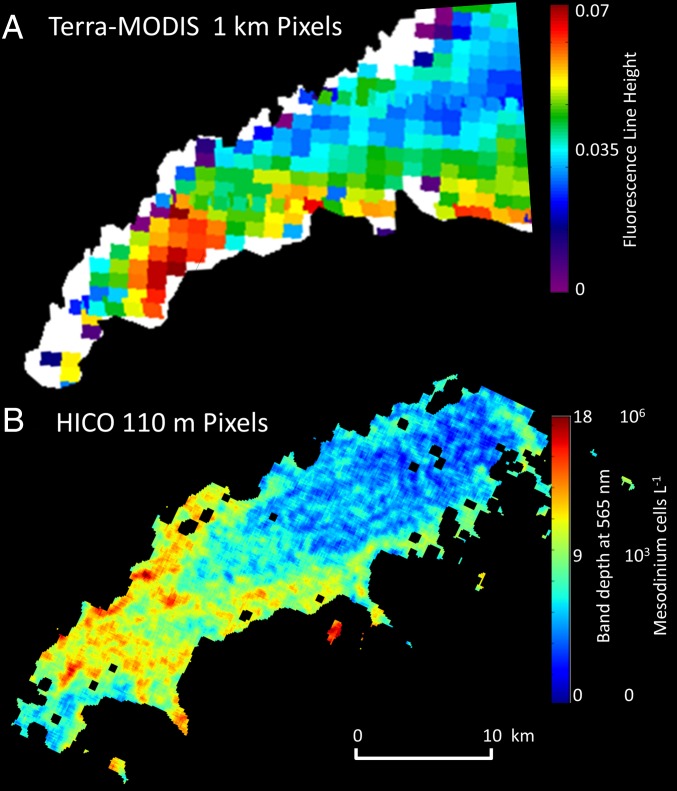Fig. 3.
(A) Image of WLIS at a resolution of 1 km from the MODIS Terra sensor shows an elevated Chl a fluorescence patch on September 23, 2012, but the type of bloom cannot be distinguished from the limited spectral bands. (B) In contrast, hyperspectral HICO imagery from the International Space Station reveals characteristic yellow fluorescence due to phycoerythrin pigment within the enslaved chloroplasts of the ciliate M. rubrum. Dense and patchy near-surface blooms of this motile and actively photosynthesizing mixotrophic marine protist (>1 × 106 cells per liter) periodically dominate primary productivity in the region.

